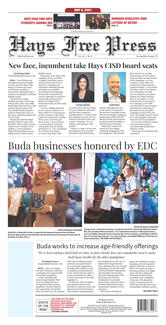by BARTEE HAILE
Half of the television sets in America were tuned to “The Beverly Hillbillies” premiere on Sept. 25, 1962 co-starring Texan Irene Ryan.
After a successful five-year run as writer-producer of “The Bob Cummings Show,” Paul Henning took an extended vacation in 1959. Filmways president Al Simon tried to lure him back to prime-time by offering to buy the TV rights to Ma and Pa Kettle.
Henning declined; he preferred something fresh rather than a small-screen rehash of the movie bumpkins. But he developed an idea that he pitched to Simon and his boss. The Filmways executives eagerly put up $100,000 to produce the pilot.
For the central character of widower Jed Clampett, Henning wanted Buddy Ebsen, the original Tin Man in “The Wizard of Oz.” Parts had been scarce for the former song-and-dance man. Ebsen was concerned about being typecast and worried he would be the show’s straight man. “It sounded like everyone was going to be very funny – everybody except me.”
But the money was good, and Ebsen accepted.
Henning imagined Granny, Jed’s mother-in-law, as “a wiry little woman,” though he let Bea Benaderet audition. She saw Ryan and said, “There’s your Granny.” Henning agreed the moment he saw Irene Ryan and Buddy Ebsen together in costume.
Born in El Paso in 1902, Irene Noblette was an “army brat” whose show business career spanned 48 years. A popular vaudeville performer, she broke into radio in 1932, and for a while she and husband Tim Ryan had their own comedy program.
Her next stop was Hollywood with supporting roles in pictures like “Bonzo Goes to College” and “Desire in the Dust.” She entertained the troops overseas with Bob Hope before transitioning to television in the 1950s.
A big grin landed Max Baer, Jr., son of the former boxing champ, the role of Jethro Bodine, Jed’s nephew. After his first choice for daughter Elly May jumped ship, Henning remembered a blond he had seen in a Rock Hudson film. “When they told me I got the part,” gushed Donna Douglas, “I thought my heart was going to burst right open!”
Rounding out the regular roster were Raymond Bailey as banker Milburn Drysdale and Nancy Kulp as his long suffering assistant Jane Hathaway. Bailey was a temperamental thespian, who once threw a punch at an ostrich on the set. Ebsen called him “the sourest person I’ve ever met in my life.”
“The Beverly Hillbillies” was an instant hit. The third episode attracted 36 million viewers, and the audience soon grew to a whopping 50 million. In four months, the comedy climbed to number-one in the Nielsen ratings and stayed on top for two seasons.
The eight most widely watched half-hour programs in TV history are all “Hillbillies” episodes telecast in the winter of 1964.
Ryan handled her money wisely and donated $1 million to a scholarship fund for theater arts majors. She did allow herself one indulgence, a long black Cadillac she drove to work every day perched on two pillows.
The 274th and last episode of “The Hillbillies” aired in September 1971. Henning and the cast went their separate ways, which for 69-year-old Ryan meant Broadway.
The vaudeville veteran appeared with Ben Vereen in the musical Pippin. After her two numbers, which always brought down the house, she would stand in the wings to savor the applause. Choreographer Bob Fosse made the mistake of suggesting for safety’s sake that she go directly to her dressing room.
“Irene looked me straight in the eye and said, ‘Bobby, I’ve traveled 3,000 miles, given up a beautiful home in California and left all my dear friends just to hear that sound. Please don’t ask me to leave the wings until the last person has stopped applauding.’”
Irene Ryan suffered a stroke during a Saturday matinee in early 1973. Hospitalized on the West Coast, she slipped into a coma and died the following April.
But as Granny, the pint-sized Texan will live forever in the reruns.
Bartee Haile welcomes your comments, questions and suggestions at P.O. Box 152, Friendswood, TX 77549 or haile@pdq.net.




